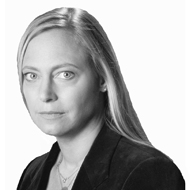New Study Identifies the Most Underappreciated Investment Skill
Money is not a client of any investment adviser featured on this page. The information provided on this page is for educational purposes only and is not intended as investment advice. Money does not offer advisory services.
Several years ago, two Yale business school professors gave the personal finance industry a jolt by devising a formula for determining how active so-called actively managed mutual funds really were. What they discovered was that the portfolios of many mutual funds were so similar to their benchmarks that they might as well be considered closet index funds—in which case investors were paying higher fees for no good reason. These closet index funds tended to underperform their benchmarks, but funds with the least overlap with their benchmarks—those with the highest Active Share as defined as the proportion of holdings that is different than their benchmarks—on average outperformed their benchmarks net of fees, according to their analysis.
Now one of the inventors of Active Share has identified another very important trait of successful mutual fund managers: patience. In a recent paper, Martijn Cremers, now of University of Notre Dame, and Ankur Pareek of Rutgers, analyzed a large sample of actively-managed all-equity U.S. retail mutual funds over a 19-year period (1995-2013) and found that only those with both high active share and patient investment strategies, where managers hold stocks longer instead of trading frequently, tended to outperform by an average of 2.3 percentage points a year, even after management costs were taken out.
Historically investors have been able to partially measure a fund manager’s patience with the self-reported Fund Turnover Ratio, which is the ratio of all sales to buys in the calendar year over the number of fund shares outstanding. The lower the ratio, the less turnover in the portfolio, but the measure is still limited to a year. Now Cremers and Pareek have introduced a different measure, called Fund Duration, which measures the length of time the fund has held $1 of equities in the portfolio over the last five years in order to identify the most “patient capital.”
How patient is patient? The median holding duration in their sample of funds was 14 months, but those funds in the top 20% for Fund Duration generally held stocks for more than 24 months. Interestingly, Cremers and Pareek have found that fund duration on average has been steadily increasing since 2001, and turnover ratios have correspondingly declined.
The authors are careful to point out that simply holding stocks for a long period of time is not associated with greater investment skill. Rather, active share matters most among funds with long durations, while among funds with short durations the difference in the performance between closet index funds and high active share funds is statistically insignificant. (They also analyzed institutional investors and hedge funds and found slightly different results.)
Some examples of mutual funds with both high active share and high fund duration as of 2013 included Baron Growth Fund, Royce Premier Fund, and Franklin Small Cap Value Fund. That doesn’t necessarily mean that you should rush out to invest in these funds today. But Cremers and Pareek’s findings do suggest that investors interested in active management should both make sure that a fund’s portfolio is truly distinct from its benchmark AND that the manager has a longer-term buy-and-hold strategy.
If that approach sounds Warren Buffett-like, indeed the researchers do attribute the outperformance of the most patient and active mutual fund managers to their (Buffett-like) focus on stocks that a) other investors shun, b) are safe (i.e. have a low beta,) c) are value-oriented (high book-to-market ratio), d) have growing profit margins; and tendency to stick with those stocks over relatively long periods.
As for Warren Buffett himself, when Cremers and Pareek analyzed Berkshire Hathaway, they found that the Active Share of its public equity portfolio fell from around 80% in 2007 to 70% at the end of the sample in 2012. And while Berkshire Hathaway remains a relatively patient investor, the holding duration has shortened from over 4 years in 2002 to a bit over 3 years. Then again, Berkshire Hathaway isn’t an equities-only mutual fund. But it’s interesting to think that some mutual fund managers may be able to out-Buffett Buffett himself when it comes to public stocks.
Konigsberg is the author of The Truth About Grief, a contributor to the anthology Money Changes Everything, and a director at Arden Asset Management. The views expressed are solely her own.
